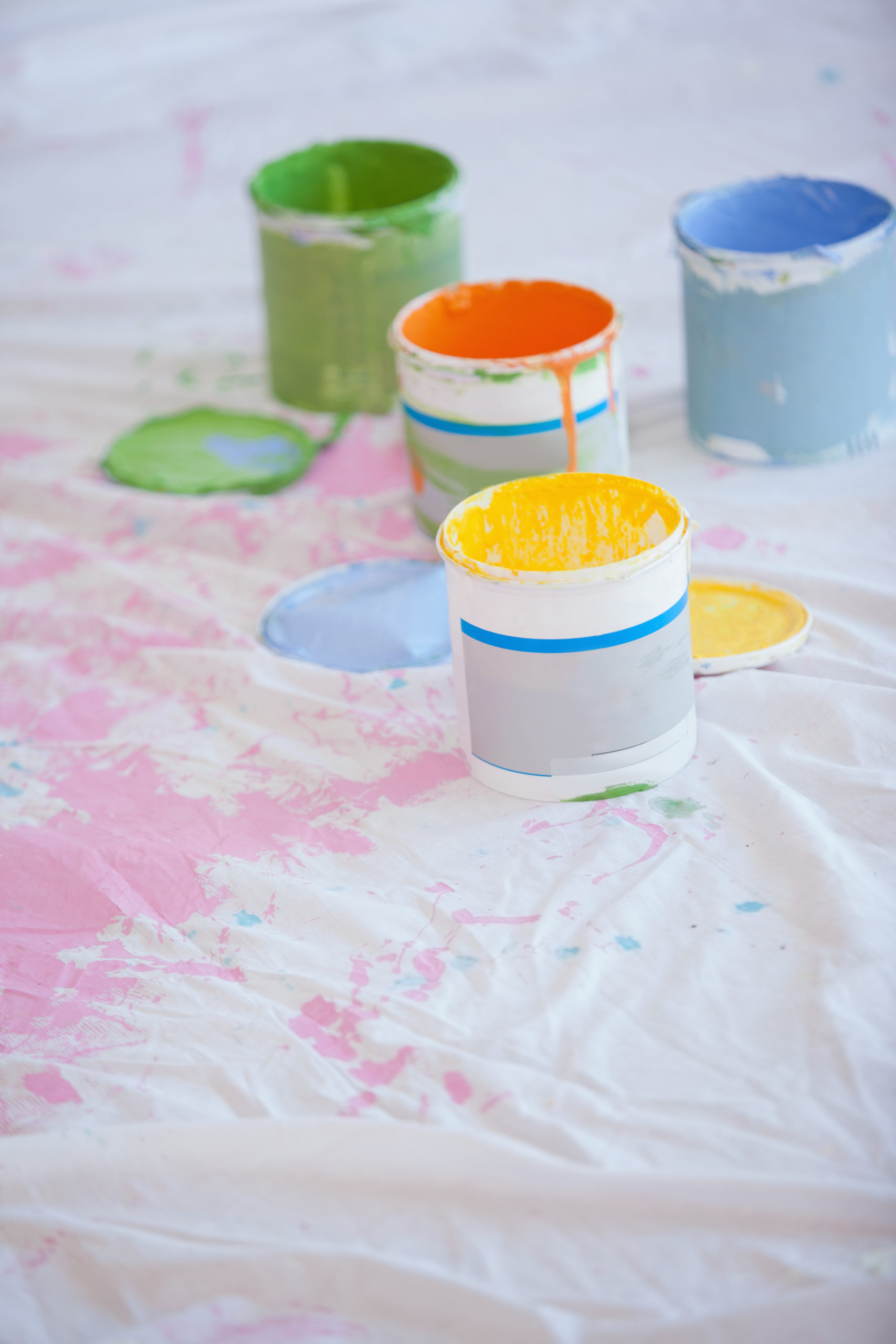It’s rare to finish a painting project without having some leftover paint. Too much leftover paint ends up in landfills each year because people needlessly throw it away. There is no reason to waste paint. Leftover paint can be saved for touch-up jobs and other projects around the home.
5 Tips to Keeping Paint Fresh

Storing paint properly involves more than just putting the lid back on the can. Here’s how to make sure leftover paint stays fresh and ready to use:
1. Prevent Air from Entering the Container
The key to long-term paint storage is to keep out as much air as possible. If the original container is almost full, you can simply reseal it. Wipe away any excess paint on the outside of the rim. Place a piece of plastic wrap over the opening and then replace the lid, firmly sealing it with taps from a rubber mallet.
2. Transfer to Smaller Containers
If there is just a small amount of paint left in a can, transfer it to a smaller container. Reusing clean glass jars to store small amounts of leftover paint is a good idea for several reasons.
- Paint stores better if it is left in a smaller container with less air.
- Smaller containers take less room to store.
- Clear glass containers make it easy to see at a glance how much paint is left.
3. Label the Containers
You’ll want to be able to clearly identify your paint products when it’s time to use them for touch-ups or as a reference to purchase more of the same product. Label containers with key information including the brand, color (name and number), the sheen/finish, and the date it was first opened. It’s also important to write down which room and/or surfaces the paint was used on. This information makes it easier to find the right container when touch-ups are needed.
4. Store in a Cool, Dry Area
Storing paint in sheds or garages is not recommended. Paint lasts longest when stored away from direct sunlight and extreme temperature changes. Most manufacturers recommend storing paint between around 60-80 degrees Fahrenheit. A temperature controlled space such as a utility room, closet or basement is usually the best location for storing paint.
5. Protect Children and Pets
Make sure any leftover paint is out of reach of children and pets. If you have young children, it’s a good idea to store all paints, solvents, and chemicals in a lockable cabinet.
When You’re Ready to Use Stored Paint
To ensure the leftover paint is still good enough to reuse when ready, you should follow a few steps.
Smell the Paint
When you reopen a can or jar of paint, it should still retain some of the same chemical smell it had when it was brand new. If you open stored paint and it has a rotten egg odor, that’s a sign of bacteria growth and the paint should not be used. Paint can also develop a mold or mildew smell. Any rancid or foul smelling paint should not be used.
Check the Consistency
It’s natural for latex paint to develop a film on the top after being stored for some time. Solidified paint chunks or jelly-like paint cannot be remixed. If the paint has solidified beyond the point of a thin film, it’s time to discard the paint.
Have it Professionally Remixed
When you’re ready to use your paint for a quick touch-up or other project, it’s a good idea to have your neighborhood paint store remix it. While in storage, and over time, resins separate from water and other elements in the paint settle. Stirring or shaking it vigorously yourself will not blend it as well as the machine at the paint store. This is usually a free service and a good one to take advantage of.
Proper Paint Disposal
Paint and paint-related products can be harmful to the environment if they are disposed of improperly. Some types of paints are considered household hazardous waste and extra precautions need to be taken. Don’t put liquid paint in the trash or pour it down household drains or storm sewers.
Check your county government or local department of public works for directions on proper disposal. You can also go to Earth911 to find locations in your area that accept paint for recycling. These services are almost always free.
If you have usable leftover paint you would like to donate, check www.freecycle.org. Many individuals and organizations, including churches, schools, and community groups, work on limited budgets and could use the extra supplies.
Walla Painting is a locally owned business that specializes in residential painting. Our fully insured, bonded, and skilled painters are equipped to handle any size project. We are proud to have received Angie’s List Super Service Award 10 years in a row for our customer service and detailed workmanship.
Check out our recent articles
Thinking of giving your kitchen a fresh, new look without breaking the bank? Painting your kitchen cabinets could be an inexpensive way
Picking the right paint color? It’s way more involved than just picking a hue on a swatch and calling it a day.
Painting a kitchen can transform a tired and dated space into a rejuvenating area where family and friends gather to create meals
